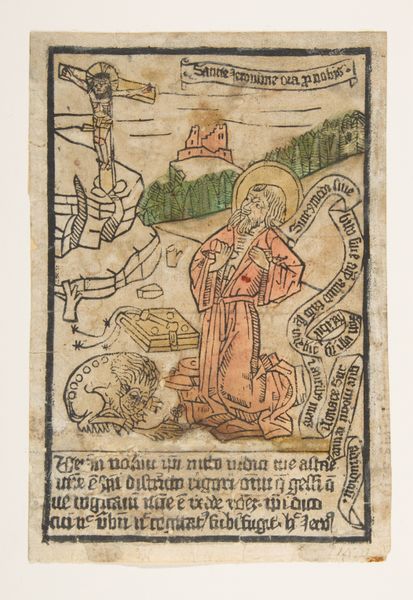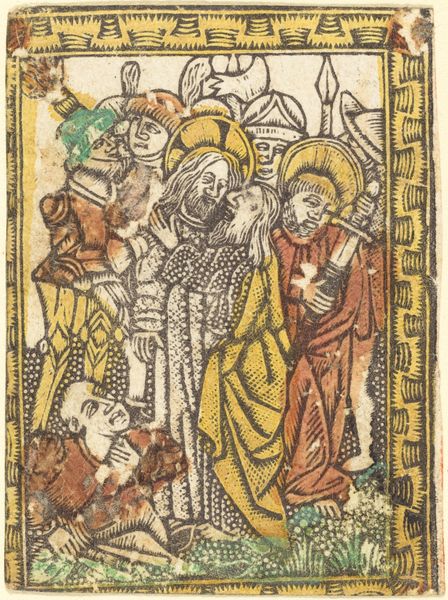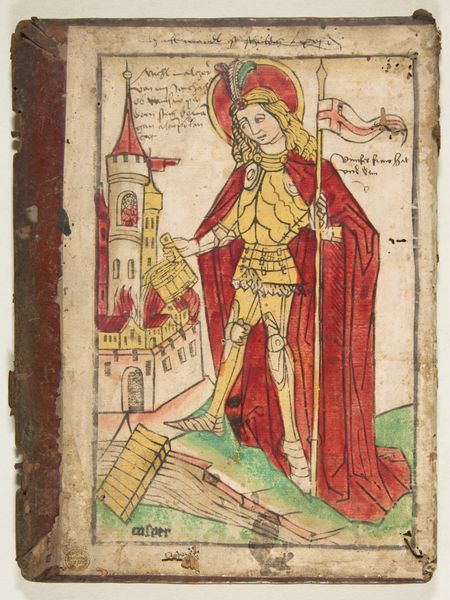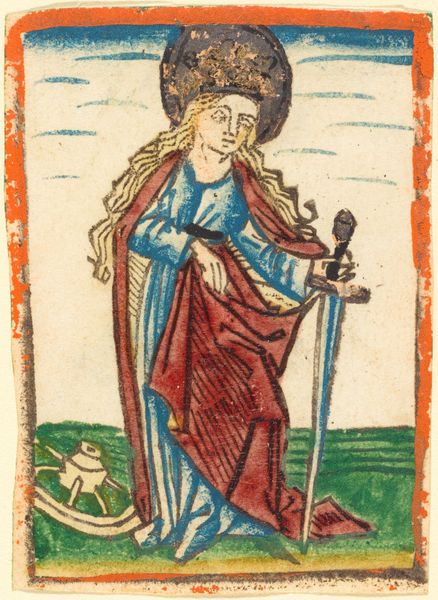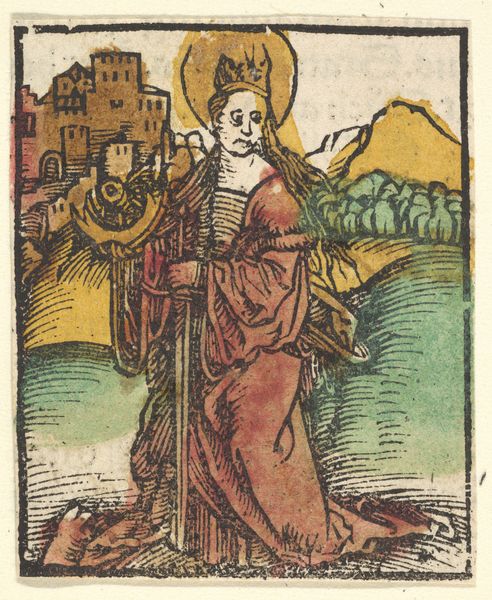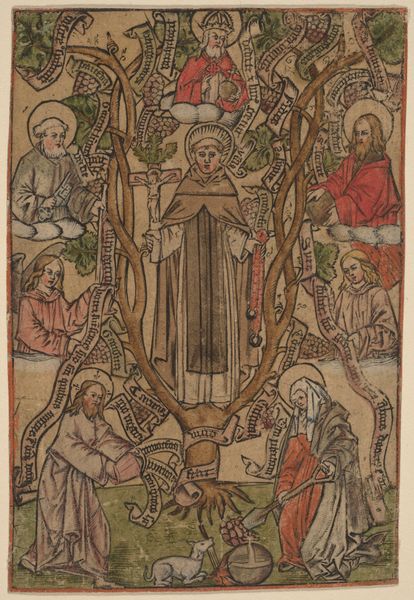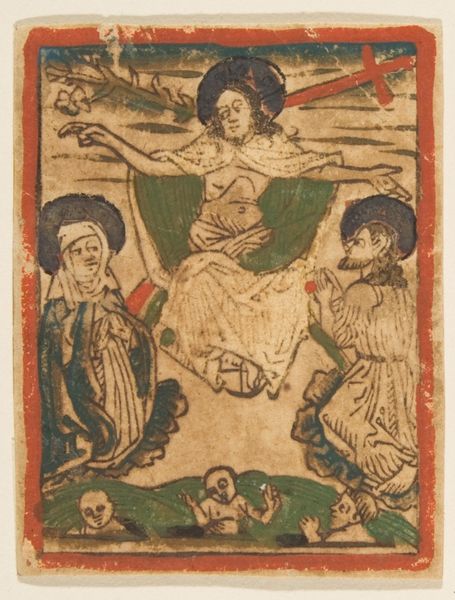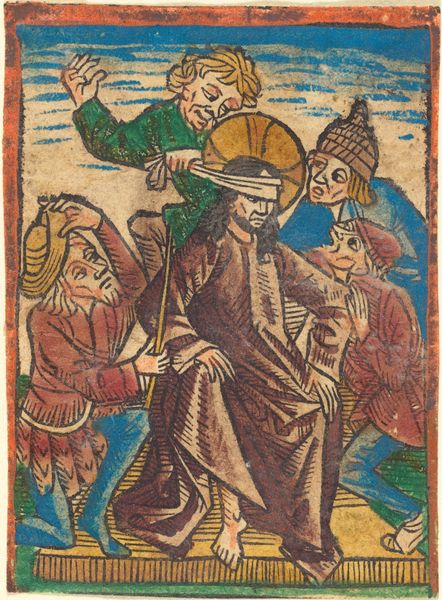
print, woodcut
#
medieval
# print
#
figuration
#
woodcut
#
history-painting
#
northern-renaissance
Copyright: National Gallery of Art: CC0 1.0
Curator: The radiant figure emerging from a tomb certainly catches the eye. What's your first impression? Editor: Definitely striking. There's a stark contrast between the serene figure and the chaos around him. The slightly clumsy woodcut lines lend a sense of raw power to the scene. It feels…direct, almost blunt. Curator: This is "The Resurrection", a woodcut dating back to the late 15th century. Created by an anonymous artist, it employs simple means to convey a monumental event. Woodcuts like these would have circulated widely during that era. Editor: The choice of imagery is powerful, if conventional: Christ carrying the banner, the disarrayed soldiers… it speaks of a triumph over mortality, yes, but also the overthrow of earthly power. I notice the odd combination of the fresh grass growing up out of what is otherwise such a dark scene. It certainly lightens the mood to convey hope to the audience. Curator: And this wasn't simply an artistic choice, but also had broader religious implications in a society undergoing massive socio-economic shifts during the late medieval and early renaissance period. Editor: This symbol is interesting from a psychological point of view. The cross-topped banner Christ bears serves to suggest Christ's own acceptance of suffering. Curator: Precisely. The availability of prints like these contributed to evolving social, cultural, and even religious identities. Editor: Looking at this image, the story comes through so directly. You're seeing and feeling something that touches a deeply held belief for many. I’m struck again by the strange mood shift from horror to hope. Curator: Indeed, it serves as a fascinating lens through which we can view the era's sensibilities, the visual strategies it employed, and its means of relating historical events. I never grow tired of seeing how visual tools spread to every member of society and touched on popular feeling.
Comments
No comments
Be the first to comment and join the conversation on the ultimate creative platform.

